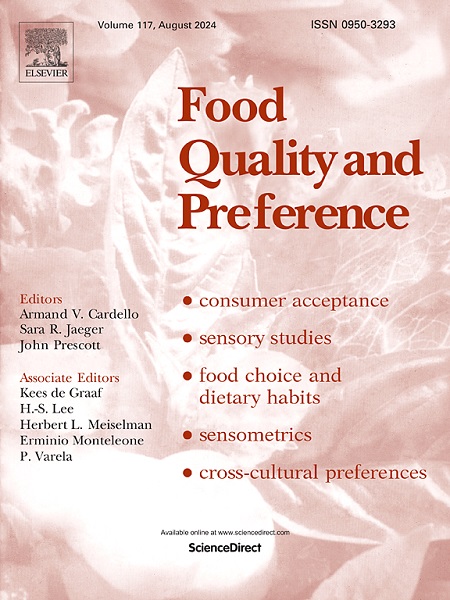Exploring the buzz: The mediating role of entomophagy attitudes among younger generations towards pork from pigs fed with insect flour
IF 4.9
1区 农林科学
Q1 FOOD SCIENCE & TECHNOLOGY
引用次数: 0
Abstract
This research examines the mediating role of Entomophagy Attitude (EA) in the relationship between neophilia and intention, as well as neophobia and intention, to consume pork from pigs fed with insect flour. A sample of 534 young Italian pork consumers was recruited to test the study hypotheses using the Partial Least Squares Structural Equation Modeling (PLS-SEM). The results indicate that the three components of EA, namely “interest”, “feeding animals”, and “disgust”, are validated as effective tools for assessing indirect entomophagy. Additionally, neophilia and neophobia have been identified as strong predictors of interest and disgust, respectively. While the feeding animals dimension contributes to transmitting information, it appears less influential compared to the other two dimensions. Although the findings indicate that consumer intentions towards pork produced from pigs fed with insect flour are low, they offer valuable insights and suggestions for future marketing strategies and policymakers aiming to integrate insect-fed meat into a sustainable food supply.
求助全文
约1分钟内获得全文
求助全文
来源期刊

Food Quality and Preference
工程技术-食品科技
CiteScore
10.40
自引率
15.10%
发文量
263
审稿时长
38 days
期刊介绍:
Food Quality and Preference is a journal devoted to sensory, consumer and behavioural research in food and non-food products. It publishes original research, critical reviews, and short communications in sensory and consumer science, and sensometrics. In addition, the journal publishes special invited issues on important timely topics and from relevant conferences. These are aimed at bridging the gap between research and application, bringing together authors and readers in consumer and market research, sensory science, sensometrics and sensory evaluation, nutrition and food choice, as well as food research, product development and sensory quality assurance. Submissions to Food Quality and Preference are limited to papers that include some form of human measurement; papers that are limited to physical/chemical measures or the routine application of sensory, consumer or econometric analysis will not be considered unless they specifically make a novel scientific contribution in line with the journal''s coverage as outlined below.
 求助内容:
求助内容: 应助结果提醒方式:
应助结果提醒方式:


